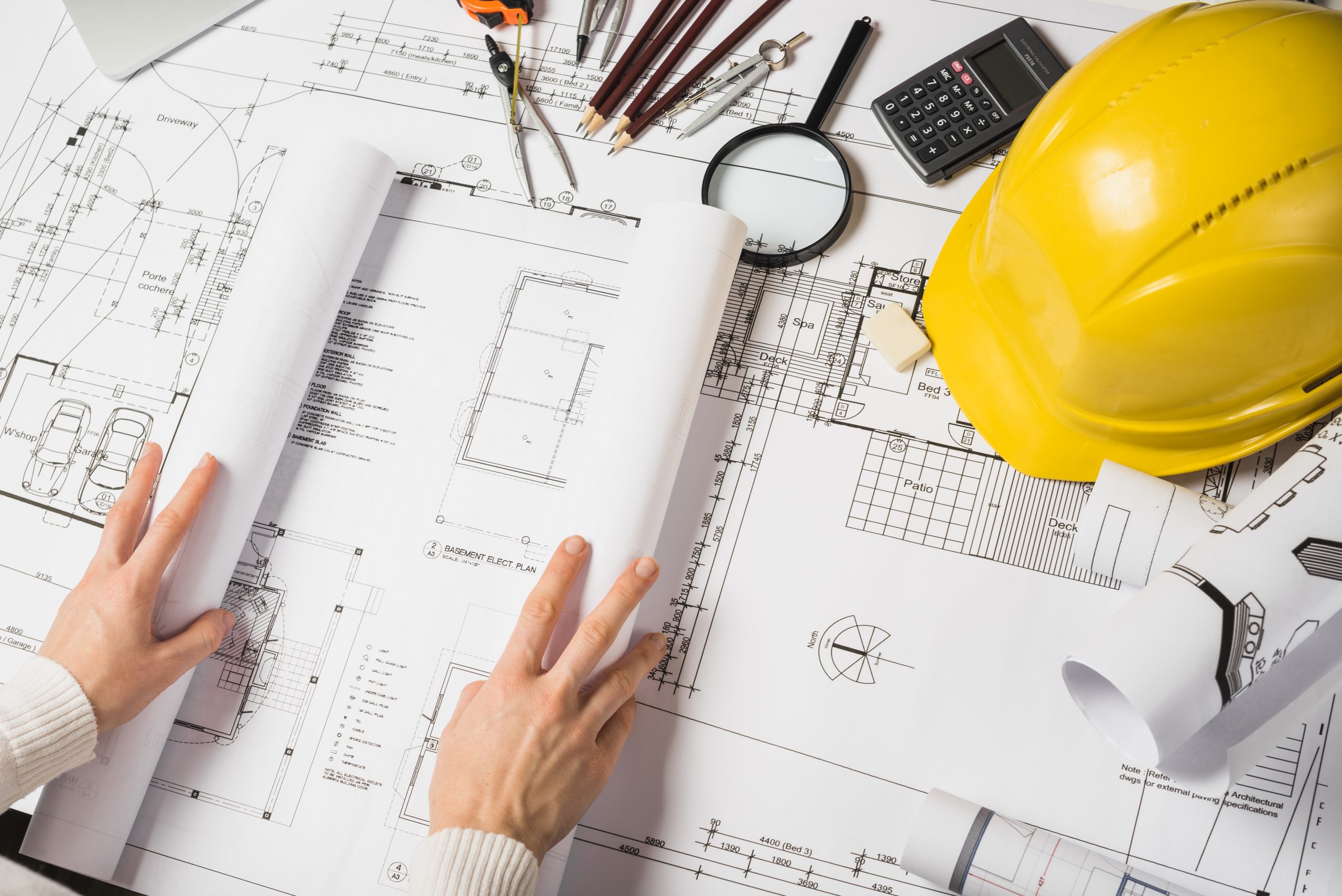Architect Rules for Designing Evergreen Interiors
Architect Rules for Designing Evergreen Interiors
Blog Article
Understanding the Diverse Occupation Paths Available for Aspiring Architect
As an ambitious Architect, you have a world of occupation paths awaiting you. Each path supplies one-of-a-kind difficulties and possibilities to apply your creative thinking and technical expertise. Whether you're drawn to standard design or the subtleties of sustainable style, there's a specific niche that lines up with your rate of interests. Recognizing these diverse choices can form your professional journey, yet which direction will you choose to explore first?
Conventional Design: Creating Structures and buildings
Traditional architecture focuses on making structures and frameworks that blend performance with aesthetic appeal. Your layouts can reflect cultural heritage, showcasing local customs while fulfilling modern requirements.
You'll establish skills in preparing, model-making, and website analysis, enabling you to imagine and connect your ideas successfully. Involving with customers, you'll require to understand their vision and equate it right into possible layouts.
Furthermore, developing codes and sustainability methods are vital in your job, ensuring your structures are eco pleasant and secure. As you expand in your profession, you'll locate chances in residential, industrial, or even repair projects, each offering distinct challenges. Welcoming traditional style paves the way for a fulfilling career that admires the past while forming the future.
Urban Preparation: Shaping Neighborhoods and Public Spaces
As an aspiring Architect, you can play a vital role as a metropolitan organizer, transforming just how neighborhoods engage and function. By utilizing neighborhood involvement methods, you'll guarantee that locals have a voice in shaping their environment. And also, integrating lasting layout principles will aid create rooms that not just satisfy today's needs however also protect the future.
Duty of Urban Planners
While lots of could think of engineers as the single enthusiasts behind buildings, urban planners play an essential function in shaping the broader landscape of neighborhoods and public rooms. By teaming up with different stakeholders, you'll help make parks, transport systems, and property locations that promote social interaction and ease of access. Your expertise in spatial design and area characteristics enables you to picture future growth while protecting cultural heritage.
Community Involvement Strategies
Effective neighborhood involvement techniques are vital for city planners to ensure that the voices of homeowners are heard and valued in the preparation process. To promote significant dialogue, you must focus on open forums and workshops where community members can share their ideas and issues. By proactively integrating and paying attention responses, you'll develop spaces that mirror the area's requirements, ultimately leading to more sustainable and effective metropolitan atmospheres.
Sustainable Design Principles
When designing city areas, including sustainable design principles is vital for developing environments that grow both ecologically and socially. You should start by concentrating on energy effectiveness, utilizing materials that reduce waste and promote recycling. Take into consideration integrating environment-friendly rooms, like yards and parks, to improve biodiversity and enhance air quality. Advertising walkability and public transportation can lessen reliance on cars and trucks, fostering a healthier community.
Designing with water preservation in mind is additionally key-- consider rainfall gardens and absorptive surface areas to handle stormwater. Involving area members during the planning procedure warranties that the rooms you develop meet their requirements and motivate social interaction. By accepting these concepts, you'll contribute to lively, lasting metropolitan landscapes that benefit every person.

Landscape Style: Creating Lasting Outdoor Environments
As you check out landscape design, you'll find necessary design concepts that create stunning and useful exterior areas. Lasting methods play an important role in making sure these environments grow while minimizing environmental effect. Plus, you'll discover a range of job possibilities that allow you to make a genuine difference in how people communicate with nature.
Style Concepts in Landscape
Understanding layout principles in landscape style is necessary for developing lasting outdoor atmospheres that harmonize with nature. You'll need to contemplate elements like range, percentage, and balance to guarantee your styles feel natural and inviting. Including native plants not only boosts biodiversity yet additionally minimizes water usage, making your landscape durable. Believe concerning the flow of room and how individuals interact with it; paths and seating areas ought to invite exploration and relaxation. Additionally, pay attention to seasonal adjustments, making with materials that match the surroundings year-round (Architect). By focusing on sustainability and aesthetic appeals, you can create exterior rooms that improve the neighborhood and advertise wellness. Welcoming these principles will establish a strong foundation for your career in landscape design.
Lasting Practices Introduction
Lasting techniques in landscape style not only concentrate on looks yet also focus on eco-friendly wellness and source conservation. You can design spaces that advertise dirt health, such as using organic materials and practicing permaculture concepts. Inevitably, these practices ensure your designs benefit both individuals and the environment for years to come.
Job Opportunities Exploration
With a solid structure in lasting techniques, landscape architecture provides a selection of career paths that permit you to make a meaningful impact on the environment. You might work as a landscape developer, creating aesthetically pleasing and useful outdoor areas, or specialize in eco-friendly reconstruction, helping to revitalize damaged ecosystems. Urban planners often work together with landscape designers to produce environment-friendly areas in city settings, enhancing city livability. If you're enthusiastic about education, consider becoming a landscape style educator, inspiring future generations. Additionally, you might collaborate with nonprofits the original source concentrated on ecological sustainability or take part in study to introduce new techniques. Each path not only forms lovely settings however likewise promotes a much healthier planet for future generations.
Sustainable Layout: Concentrating on Eco-Friendly Practices
As you discover your occupation in design, embracing environmentally friendly methods can set you apart in an affordable area. Sustainable layout concentrates on developing buildings that reduce ecological effect while improving occupant health. By including renewable products, energy-efficient systems, and sustainable structure techniques, you'll contribute to a greener future.
Begin by obtaining knowledge of environment-friendly certifications like LEED or dig this BREEAM, which can boost your credentials. Consider exactly how natural light, ventilation, and thermal performance can optimize design. Work together with engineers and ecological specialists to innovate remedies that decrease waste and preserve sources.
Do not fail to remember the value of neighborhood involvement-- appealing regional stakeholders can influence layouts that balance with the environment. As customers increasingly prioritize sustainability, your expertise in eco-friendly techniques will certainly not only attract tasks however additionally fulfill your passion for liable style. Accept this critical element of the profession, and enjoy your career prosper.
Historical Conservation: Securing and Restoring Social Heritage
While you start on your building trip, think about the important function of historical conservation in keeping our social heritage. This field focuses on the protection and repair of substantial buildings, sites, and frameworks that inform the stories of our past. By taking part in historical conservation, you'll assist secure the architectural tradition that forms neighborhood identity.
As a historic preservation Architect, you'll examine historical importance and examine the condition of frameworks. You'll function closely with historians and conservationists to guarantee genuine repair strategies are employed. This career course enables you to blend imagination with study, enabling you to design services that value initial products and workmanship.
Your job not just adds to sustainability by reusing existing structures but additionally fosters a feeling of pride within communities. Embracing this course will certainly aid you end up being a guardian of background, maintaining the stories and aesthetic appeals that enrich our lives.
Interior Design: Enhancing Indoor Spaces
Historic conservation and indoor architecture both share a dedication to improving the built atmosphere, but they concentrate on different elements. While historic preservation stresses keeping a framework's social and historic value, interior design absolutely nos in on maximizing indoor spaces for performance and visual appeals.
As a hopeful Architect, you'll locate that indoor architecture allows you to mix creativity with technical skills. You'll make rooms that not only look good however also advertise comfort and performance. This field involves understanding how light, shade, and products interact within a space, impacting state of page mind and functionality.
You'll deal with numerous tasks, from household homes to business workplaces, making certain that each environment satisfies the demands of its residents. By focusing on individual experience, you can transform insides right into practical and inspiring rooms, making a substantial influence on exactly how people interact with their surroundings. Welcome the chance to improve indoor environments and form the means people function and live.
Industrial Style: Merging Capability With Visual Appeals
Industrial layout plays an important role in developing items that perfectly mix appearances with performance, making sure that what you use daily is not only aesthetically appealing yet likewise functional. As an aspiring Architect, you might involve on your own in this field, concentrating on creating whatever from furniture to consumer electronic devices. Your work involves comprehending user demands, products, and manufacturing processes, permitting you to create cutting-edge remedies that boost everyday experiences.
In commercial style, you'll frequently work together with engineers, makers, and marketers, making sure that your layouts are not only stunning but also feasible. You'll learn to balance kind and function, focusing on use without sacrificing style. By sharpening your abilities in sketching, 3D modeling, and prototyping, you'll be fully equipped to bring your concepts to life. This job course offers a dynamic setting where creative thinking meets practicality, making it a gratifying option for designers curious about forming the items of tomorrow.
Often Asked Questions
What Educational Qualifications Do I Need to Become an Engineer?
To become a designer, you'll require a professional level in design, normally a Bachelor's or Master's. Furthermore, you'll have to finish a teaching fellowship and pass the Architect Registration Assessment to practice legitimately.
Are There Qualification Requirements for Various Architectural Job Paths?
Yes, there're accreditation requirements for different building courses. Architect. You'll require to pass examinations, complete teaching fellowships, and sometimes seek specialized training, depending upon your chosen focus, like landscape style, metropolitan layout, or historic conservation
What Software Program Skills Are Crucial for Designers Today?

Exactly How Can I Gain Practical Experience While Researching Design?
You can get functional experience by interning at architectural companies, taking part in layout competitions, offering for community jobs, or collaborating with schoolmates on real-world assignments. These possibilities enhance your abilities and build valuable links in the sector.
What Task Opportunities Exist Outdoors Traditional Design Firms?
You can explore different job possibilities outside typical style firms, like metropolitan planning, indoor design, landscape design, construction monitoring, genuine estate development, or perhaps functions in sustainability consulting. Each deals distinct challenges and incentives.
Whether you're attracted to traditional style or the nuances of sustainable design, there's a specific niche that straightens with your rate of interests.When designing urban rooms, including sustainable style concepts is crucial for creating environments that flourish both ecologically and socially.As you explore landscape style, you'll find essential design concepts that create functional and attractive outdoor rooms.Understanding style principles in landscape design is important for creating sustainable outdoor atmospheres that integrate with nature.In commercial style, you'll usually team up with engineers, producers, and marketers, making sure that your styles are not just lovely however likewise possible.
Report this page